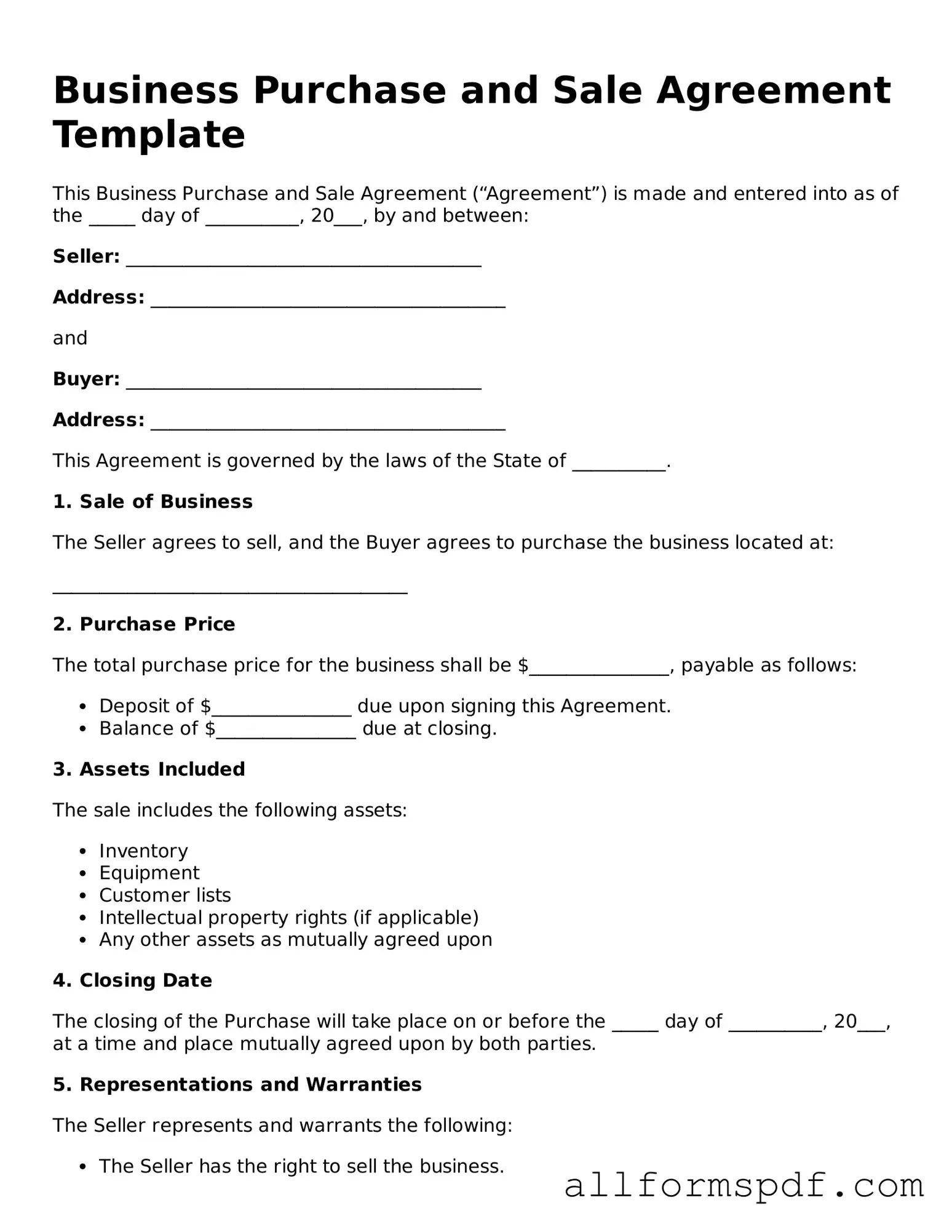When completing the Business Purchase and Sale Agreement form, many individuals encounter common pitfalls that can lead to complications later on. One frequent mistake is failing to provide accurate information about the parties involved. This includes not only names but also addresses and contact details. Inaccurate information can cause confusion and may delay the transaction.
Another mistake is overlooking the importance of clearly defining the terms of the sale. Buyers and sellers sometimes assume that certain terms are understood without being explicitly stated. This can lead to misunderstandings regarding payment terms, timelines, and other critical aspects of the agreement.
Many people also neglect to include all necessary attachments or exhibits. These documents may include financial statements, inventory lists, or other relevant materials. Omitting these can result in a lack of clarity about what is being sold and can create issues during the closing process.
Additionally, individuals may fail to address contingencies in the agreement. Contingencies are conditions that must be met for the sale to proceed. Without clearly outlined contingencies, parties may find themselves in a difficult situation if unexpected issues arise.
Another common error is not seeking legal advice or guidance when needed. While it may seem straightforward, the nuances of a business sale can be complex. Skipping this step can lead to oversight of important legal considerations that could affect the transaction.
Lastly, some people do not take the time to review the completed form thoroughly before submission. Errors or omissions can easily go unnoticed, which can lead to delays or disputes down the line. A careful review can help catch mistakes and ensure that all necessary information is included.
